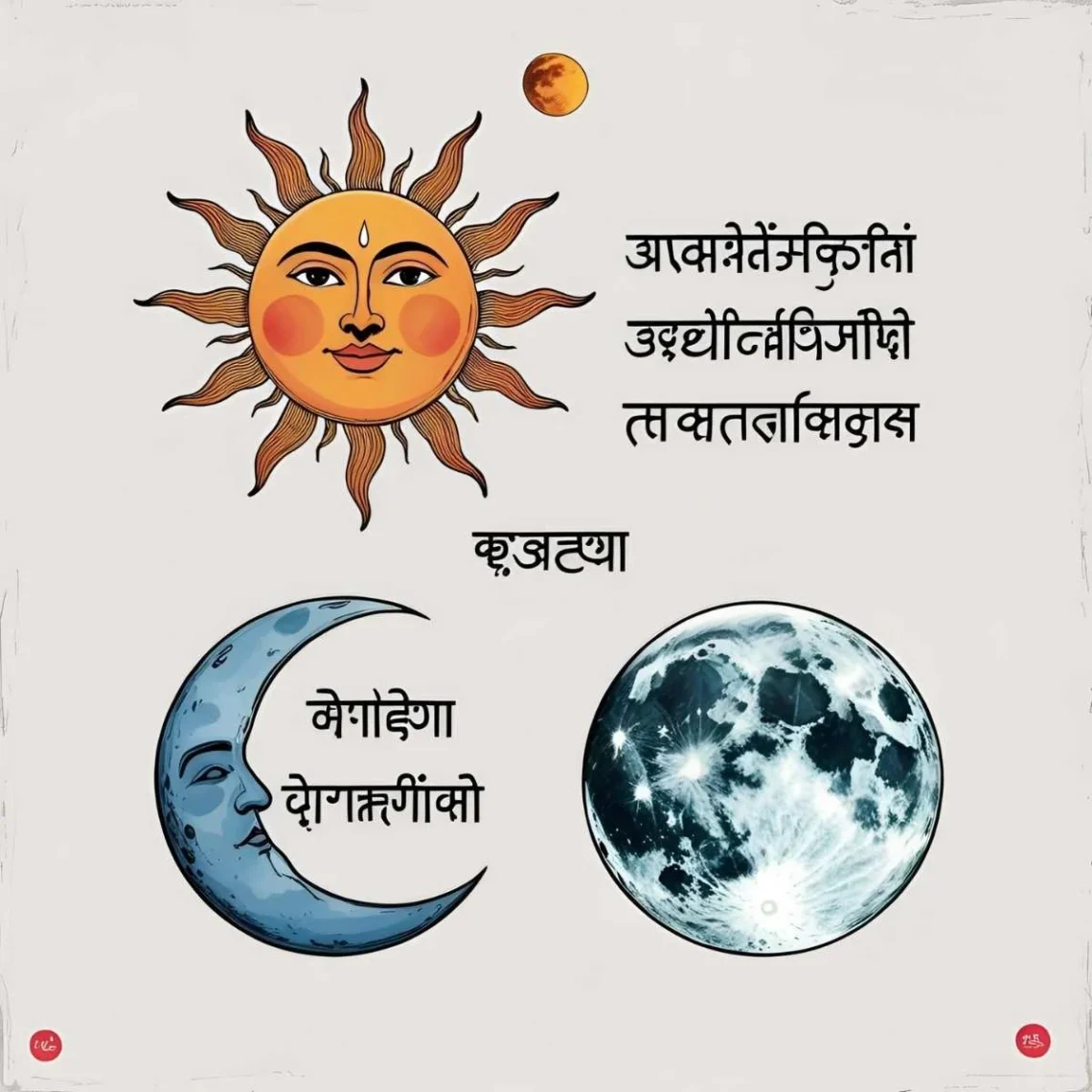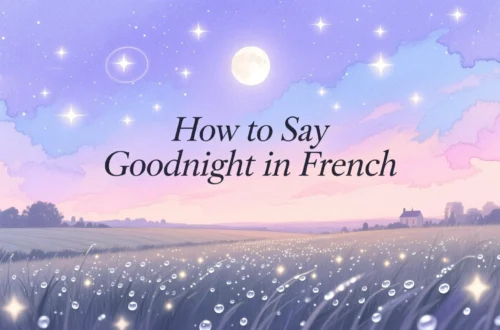As a child, I gazed at the sky, marveling at the sun’s warmth and the moon’s gentle glow, wondering how others named these celestial wonders. These words, “sun” and “moon,” resonate universally, yet each culture paints them with unique hues.
For instance, whether it’s “soleil” in a French vineyard or “tsuki” in a Japanese garden, these terms reflect humanity’s awe for the cosmos, shaped by distinct traditions.
Let’s embark on a global journey to explore how people name the sun and moon, revealing the cultural stories behind these celestial symbols.
Reference Table: “Sun” and “Moon” in Different Languages
| Language | Sun | Moon | Cultural/Linguistic Insight |
|---|---|---|---|
| French | Soleil | Lune | “Soleil” evokes warmth; “lune” is tied to romance and mystery. |
| Spanish | Sol | Luna | Both derive from Latin, symbolizing power and beauty. |
| Italian | Sole | Luna | “Sole” reflects vitality; “luna” inspires poetic love. |
| German | Sonne | Mond | “Sonne” is feminine, “Mond” masculine, showing unique gender roles. |
| Mandarin | Tàiyáng (太阳) | Yuèliàng (月亮) | “Tàiyáng” means “great sun”; “yuèliàng” suggests bright moonlight. |
| Hindi | Sūraj | Chand | “Sūraj” is a kingly figure; “chand” is poetic, tied to love songs. |
| Japanese | Taiyō (太陽) | Tsuki (月) | “Taiyō” implies grandeur; “tsuki” is serene, linked to haiku. |
| Korean | Hae (해) | Dal (달) | “Hae” is vibrant; “dal” evokes calm, used in folklore. |
| Arabic | Shams (شمس) | Qamar (قمر) | “Shams” symbolizes radiance; “qamar” is poetic, used in over 20 countries. |
| Swahili | Jua | Mwezi | “Jua” means “day”; “mwezi” is tied to lunar cycles in East Africa. |
| Zulu | Ilanga | Inyanga | “Ilanga” is life-giving; “inyanga” relates to healers and lunar rituals. |
| Yoruba | Òòrùn | Òsùpá | “Òòrùn” is divine; “òsùpá” is mystical, tied to Yoruba spirituality. |
| Maori | Rā | Marama | “Rā” is a life force; “marama” reflects clarity and guidance. |
| Hawaiian | Lā | Mahina | “Lā” means “day”; “mahina” is linked to navigation and myths. |
| Cherokee | Nvda | Nvdo | “Nvda” is sacred; “nvdo” ties to storytelling and cycles. |
European Languages: Celestial Symbols of Light and Love
European languages infuse “sun” and “moon” with vivid imagery. For example, in French, “soleil” and “lune” evoke warmth and romance, often heard in Parisian love songs. Meanwhile, Spanish uses “sol” and “luna,” rooted in Latin, symbolizing strength and ethereal beauty. In Spain, “luna” might inspire a flamenco lyric. Additionally, Italian’s “sole” and “luna” carry vitality and poetic charm, as Italians celebrate the sun’s energy and the moon’s allure. In German, “Sonne” (feminine) and “Mond” (masculine) reflect unique gender assignments, with “Sonne” tied to life and “Mond” to mystery. Thus, these terms blend Europe’s love for art and nature, from French romance to German precision.
Asian Languages: Harmony in the Heavens
Asia’s languages offer poetic names for the sun and moon, reflecting harmony and reverence. For instance, in Mandarin, “tàiyáng” (great sun) and “yuèliàng” (bright moon) emphasize grandeur and serenity, used in China’s festivals. In Hindi, “sūraj” (sun) is a kingly figure, while “chand” (moon) inspires Bollywood love songs. Similarly, Japanese uses “taiyō” and “tsuki,” with “tsuki” appearing in haiku for its calm beauty. In Korean, “hae” (sun) and “dal” (moon) evoke vibrancy and tranquility, tied to folklore. Finally, Arabic’s “shams” and “qamar,” used across over 20 countries like Egypt and Iraq, carry poetic weight, with “qamar” starring in love poetry. These terms highlight Asia’s blend of reverence and artistry for celestial bodies.
African Languages: Cosmic Connections to Life
African languages tie “sun” and “moon” to life and spirituality. For example, Swahili, spoken in over 20 countries like Kenya and Tanzania, uses “jua” (sun) and “mwezi” (moon), with “mwezi” linked to lunar calendars. In Zulu, “ilanga” (sun) and “inyanga” (moon) connect to life and healing rituals in South Africa. Similarly, Yoruba’s “òòrùn” (sun) and “òsùpá” (moon) in Nigeria are divine, tied to spiritual practices. These terms, used in communal settings like festivals, reflect Africa’s view of the sun and moon as life-giving forces, celebrated with dance and song.
Indigenous & Island Languages: Celestial Guides in Community
Indigenous and island languages name the sun and moon with reverence for guidance. For instance, Maori in New Zealand uses “rā” (sun) and “marama” (moon), with “marama” symbolizing clarity in navigation. In Hawaiian, “lā” (sun) and “mahina” (moon) tie to day and navigation myths, reflecting aloha’s spirit. Similarly, Cherokee’s “nvda” (sun) and “nvdo” (moon) are sacred, used in storytelling. In Samoan, “lā” (sun) and “māsina” (moon) emphasize community rituals. Across these cultures, from New Zealand to the Cherokee Nation, these terms highlight the sun and moon as guides, celebrated in communal traditions.
Cultural Insights: The Evolution of Celestial Names
Names for “sun” and “moon” have evolved with cultural beliefs. For example, Latin’s “sol” and “luna” influenced Romance languages, symbolizing power and mystery. In ancient Egypt, “Ra” (sun god) shaped Arabic’s “shams.” Moreover, in African traditions, terms like “inyanga” tie to lunar healing rituals. In Asia, “taiyō” and “tsuki” reflect Shinto and Buddhist reverence for nature. These words carry histories of worship, navigation, and poetry, from ancient solar deities to modern lunar festivals, uniting humanity’s gaze toward the sky.
Proverbs and Sayings: Wisdom of the Cosmos
- French: “Le soleil brille pour tous.” (The sun shines for everyone.) – Emphasizes universal hope.
- Hindi: “Chandni raat mein pyar jagta hai.” (Love awakens in a moonlit night.) – Ties the moon to romance.
- Swahili: “Jua na mwezi, wote ni nuru.” (Sun and moon, both are light.) – Celebrates their shared role.
- Japanese: “Tsuki wa kokoro o terasu.” (The moon lights the heart.) – Highlights emotional guidance.
- Yoruba: “Òòrùn mu ayọ wa.” (The sun brings joy.) – Links the sun to happiness.
FAQs
Why do some words for “sun” and “moon” sound similar?
Shared linguistic roots, like Latin’s influence on Spanish and Italian, or Arabic’s on Swahili, create similarities.
What’s the oldest term for “sun” or “moon”?
Egyptian “Ra” (sun, circa 3000 BCE) and Sumerian “Sin” (moon, circa 2000 BCE) are among the earliest.
How do cultures shape these terms’ use?
Spiritual cultures (e.g., African, Indigenous) tie them to rituals, while artistic ones (e.g., European, Asian) emphasize poetry and romance.
Conclusion
From “sol” in Spain to “jua” in Tanzania, the words for “sun” and “moon” weave a celestial thread through human culture. Each term, whether the vibrant “taiyō” in Japanese or the sacred “nvda” in Cherokee, reflects unique values while celebrating our shared awe for the cosmos. Consequently, these words remind us that the sun and moon unite all people under one sky. How do you say “sun” and “moon” in your language, and what stories do they tell? Share your thoughts below—we’re eager to hear your cosmic tale!





